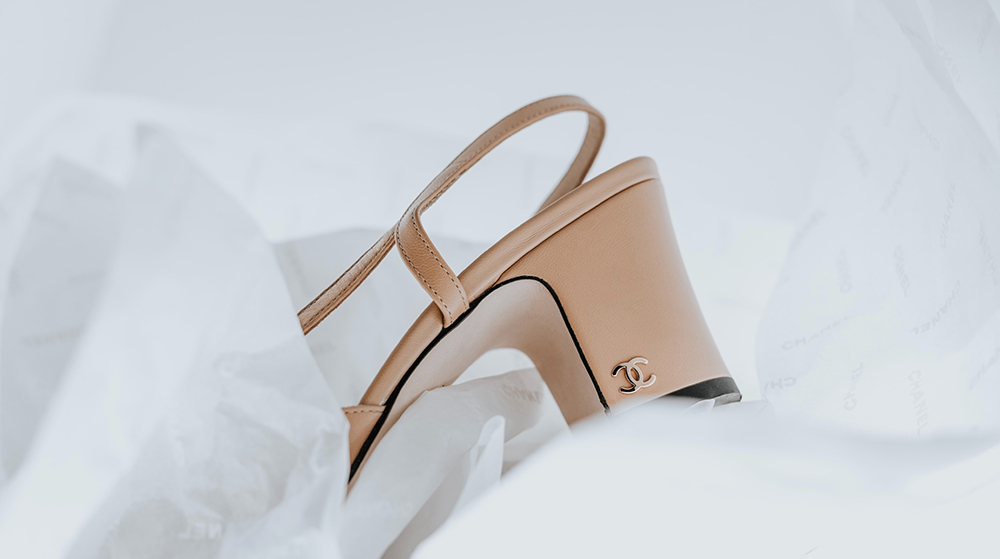
MullenLowe Group Strategy Director Hannah Hayes-Westall considers what Chanel’s mid-year financial results say about the power of conviction, and the lessons to be learnt for newer luxury brands.
There may be few better examples of businesses with nerves of steel than Chanel, as its mid-year financial results reveal. The storied French fashion and luxury goods house, which has actively held to its belief in the power of the personal experience of luxury throughout its history, retained its commitment to physical retail throughout the Covid-19 pandemic, refusing to make its fashion and accessories available online via traditional eCommerce despite declines in revenues that overshadowed similar businesses.
The company focused instead on increasing connections with existing customers, creating an app and offering concierge services, but did not seek to broaden its audiences. In doing so, it ran the risk that, as the world reopened, customers would return in greater numbers to those brands who had remained digitally available, forsaking the power of the personal. In fact, as the results released in June show, Chanel has recovered faster than its competitors, and it brings into focus the very different approaches to luxury now being trialled by the industry.
Historic brands like Chanel and Hermès are perhaps more ready to take potential risks, supported as they are with high levels of brand recognition and the combined economic boons of a very resilient luxury customer base and the ongoing revenues from more widely available fragrance and cosmetics operations. Yet, doubling down on core customers alone is a route that is far less likely to support successful growth, or indeed survival, for newer players. Instead, a focus on delivering a connected and authentic experience of the brand’s beliefs in action is a route that will deliver growth, and it’s a route that requires skilled brand management of a raft of communications tools and the specialist service providers who deploy them.
For luxury’s biggest players, the budgets behind this kind of activity can be substantial; Campaign magazine reports that Chanel increased its ‘brand support activities’ in the three years before the pandemic – from $1.46bn in 2017 to $1.65bn in 2018 and then to $1.77bn in 2019. However, where brands seek to build awareness and assist in revenue creation, at lower scales the skills honed by the advertising, media and digital agencies working worldwide for brands in other highly competitive sectors can be nothing less than transformative.

As McKinsey and Business of Fashion’s 2021 State of Fashion report showed, executives across the industry see the pandemic as creating a paradigm shift in which the industry response to business shocks and consumer behaviour change has forever altered how business is done, and accelerated the shift to digital. The budgets required to succeed at scale in this new world can be challenging, and so too is the scale of the upskilling required. For whilst fashion remains a best-practice example of desire creation, its legacy marketing structures can trip up all but the most nimble brands.
As the McKinsey report showed, the move to digital has increased customer acquisition costs in some key markets to levels that put paid advertising spend beyond the reach of most brands, whilst other indicators show that the rich digital-only communications landscape created by global lockdowns has opened consumer eyes to a world of new opportunities, at the cost of the mental space previously given to the most recognisable brands. Add an emergent generation of customers with markedly different ideas about the world compared to their predecessors to the mix, and the stormy trading environment holds greater menace.
However, agencies skilled in navigating this new landscape may come from well outside the fashion world, bringing expertise, yet perhaps also challenges for brand teams tasked with managing them. Whilst the characteristics of the Chanel business that have enabled it to survive this market turbulence so well make it an outlier, it is the house’s convictions that provide the tools for newer brands and their specialist communications service providers.
Brands in every category have seen powerful business results when they use their convictions, or ‘brand purpose’, as the thread that connects everything that they do, and it has enabled non-fashion specialist agencies to develop and create powerfully effective work. There is no doubt that fashion remains the gold standard of desire creation, with skilled creative teams able to redefine what constitutes the desirable attributes of a product on a global scale, however, it is those brands that have been able to articulate and share their values and beliefs that have retained their prominence in the hearts and minds of audiences worldwide.
The importance of creativity at the heart of Michele’s Gucci, the support for a truly inclusive and equitable society at Nike and, at a smaller budgetary scale, the unwavering focus on animal and environmental welfare at Stella McCartney; the support of arts and culture by brands as diverse as Saint Laurent and Supreme – these are the belief systems that inform work with the potential to reach far beyond the traditional remit of, and audience for, luxury brand communications. Deployed by skilled providers, messages based on purpose bring outsize business results, decrease the volatility of the market and create a stronger customer base.
Not all brands can draw on more than 100 years of embodying their purpose, but in an incredibly challenging time, learning from lessons both inside and outside the fashion industry may provide a route through difficult terrain.
Hannah Hayes-Westall is a brand strategy director at MullenLowe focused on luxury and fashion, working with clients including Farfetch, sloggi and Moleskine on global communications strategy. Hannah has worked with many of the world’s most recognisable brands, from Calvin Klein and Versace to Swarovski, Selfridges, Loro Piana and Mercedes-Benz. She is co-publisher of arts magazines Art of Conversation and FAD, and writes about art, culture, fashion and advertising for Luxury London, Little Black Book and AdWeek.
Opening image credit: Najla Cam
